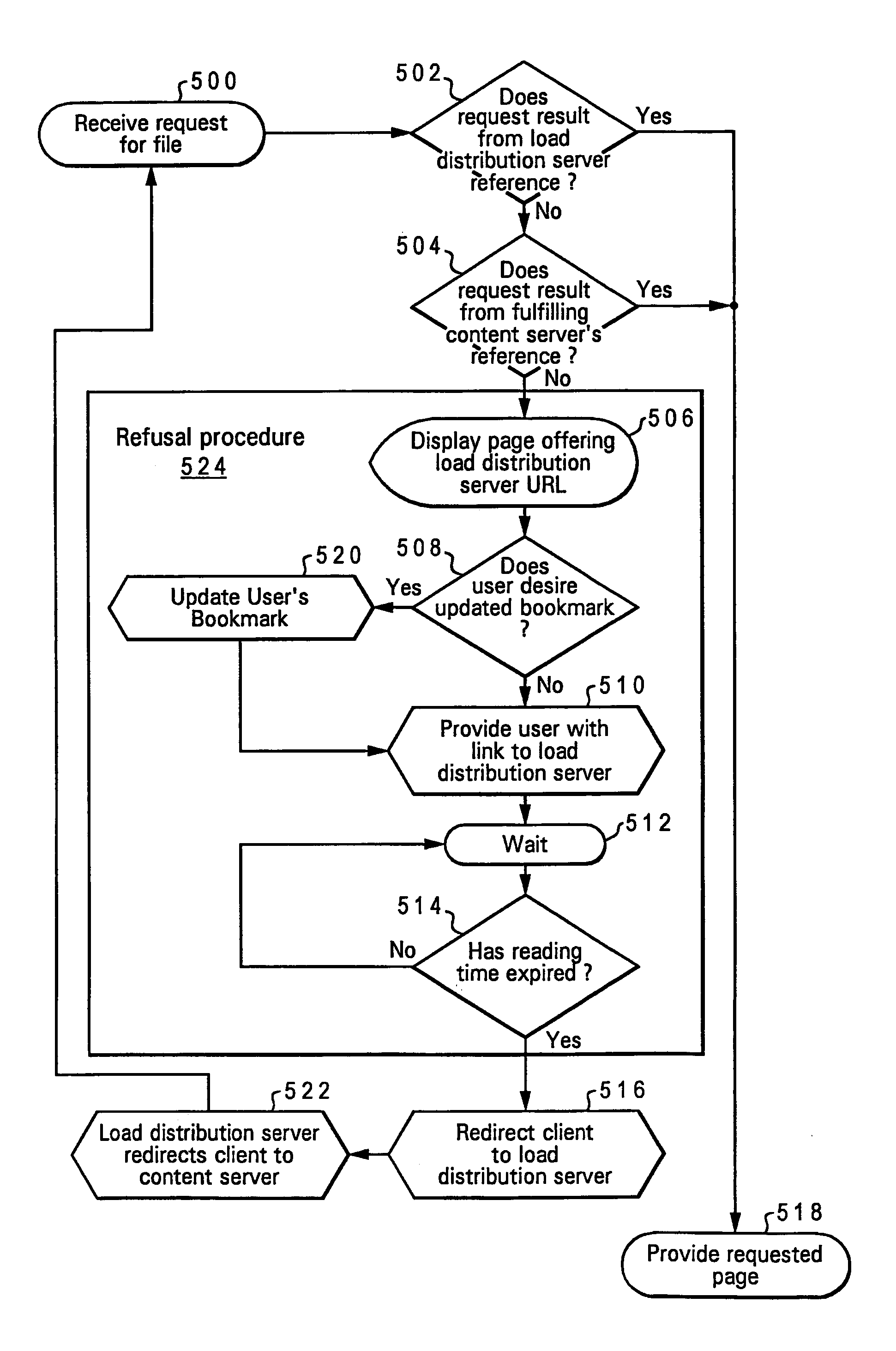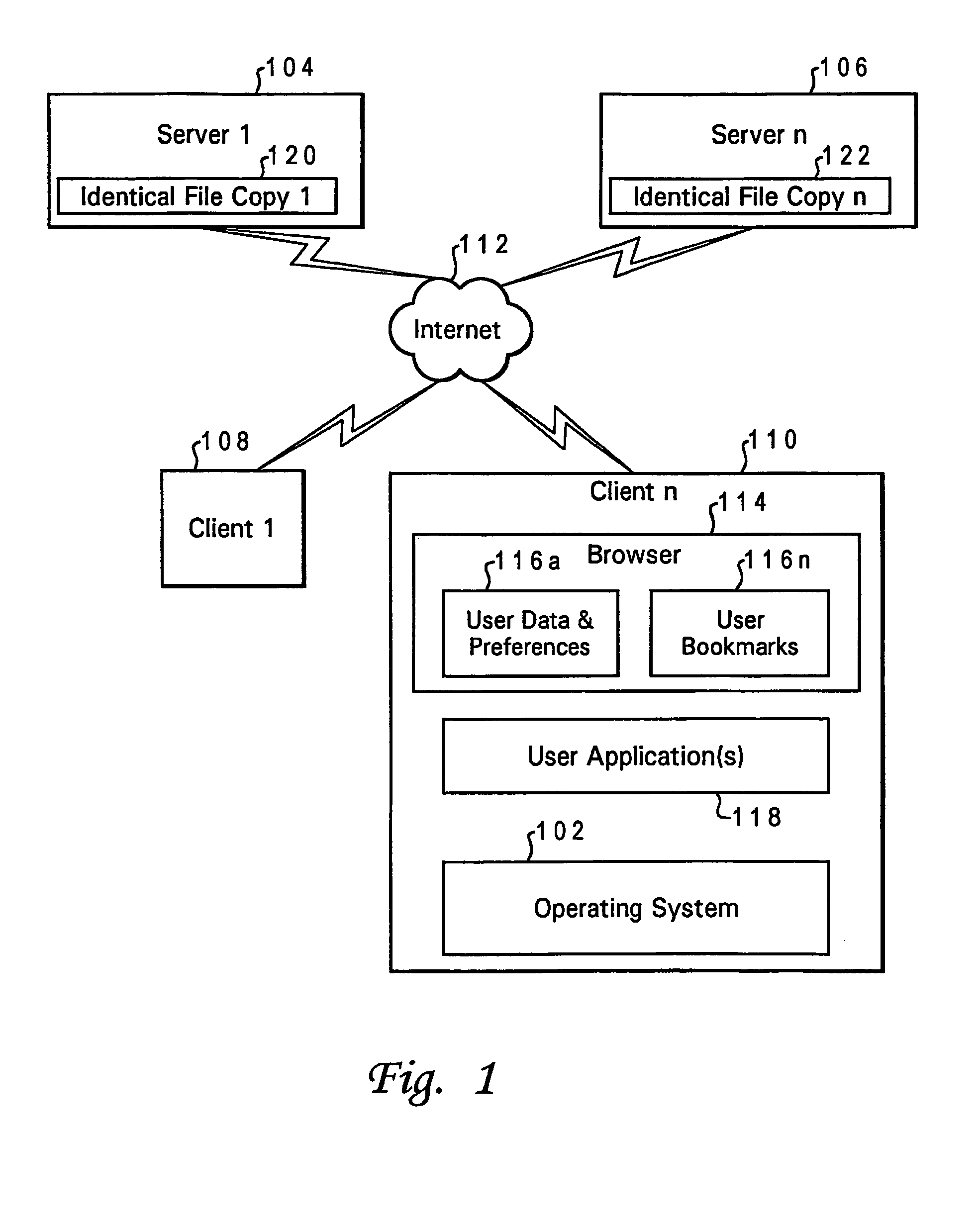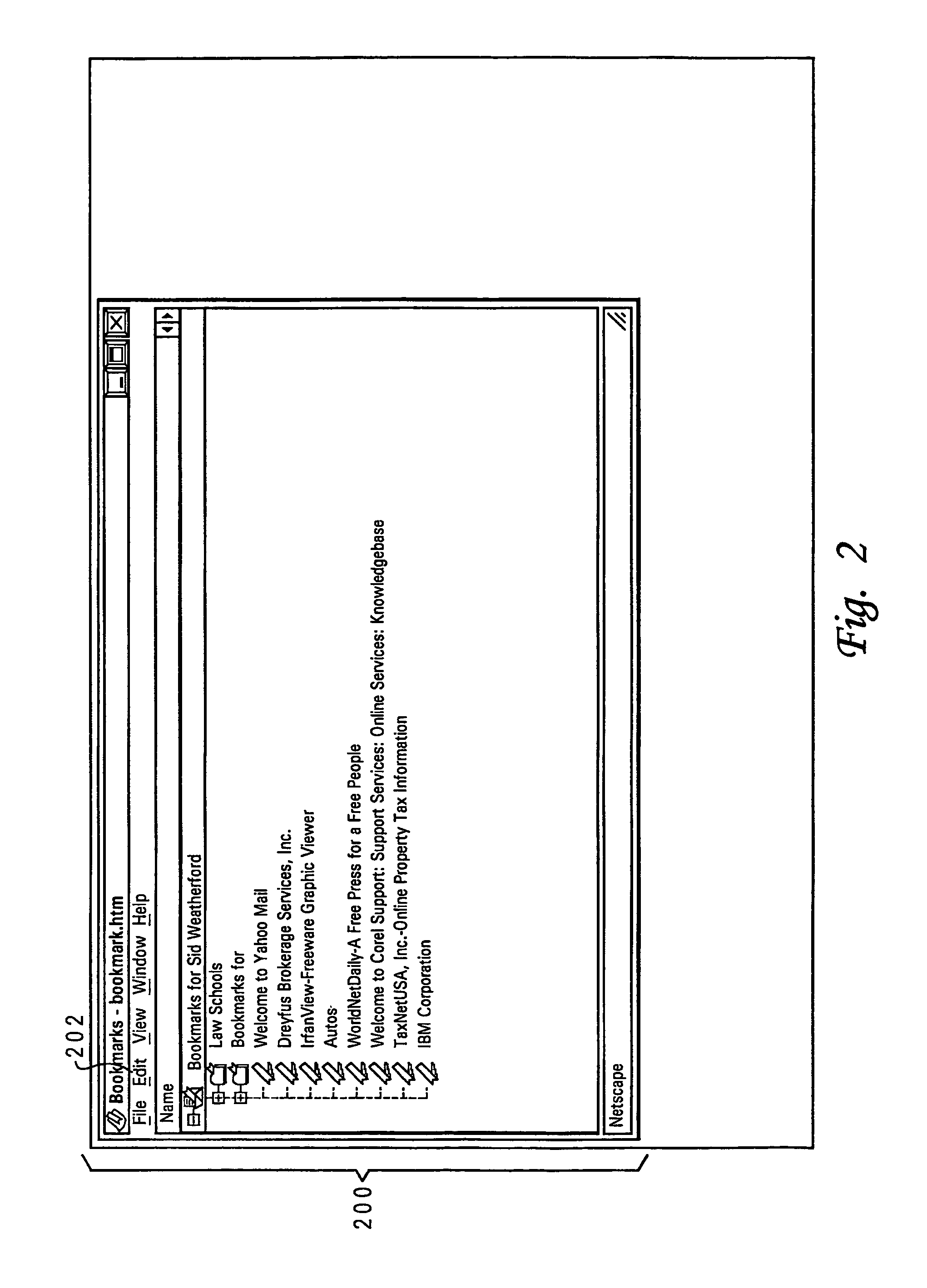Method, system, and computer program product to redirect requests from content servers to load distribution servers and to correct bookmarks
a content server and redirection technology, applied in the field of file server, can solve the problems of user loss of file requests, and user experience of the first content server b>1402/b>, and achieve the effect of reducing the risk of any one content server being overwhelmed with traffic and substantially reducing the risk of users unintentionally or intentionally avoiding traffic routing algorithms
- Summary
- Abstract
- Description
- Claims
- Application Information
AI Technical Summary
Benefits of technology
Problems solved by technology
Method used
Image
Examples
Embodiment Construction
[0033]With reference now to the figures, and in particular with reference to FIG. 1, a data processing system network in which a preferred embodiment of the present system may be implemented is depicted. In this environment, n servers 104 and 106 provide web page content in response to requests from n clients 108 and 110. In the particular case portrayed in FIG. 1, identical copies 120 and 122 of the content are carried on multiple servers. By placing identical copies on multiple servers, a re-directing arrangement of load servers and content servers may be implemented which will allow a load distribution server to protect any given content server from being overload with file requests. This can be accomplished in the preferred embodiment over a packetized data network supporting the hypertext transport protocol (HTTP) such as the Internet 112. An individual client 110 will typically contain a variety of user applications 118 and other software programs. One of the programs running ...
PUM
 Login to View More
Login to View More Abstract
Description
Claims
Application Information
 Login to View More
Login to View More - R&D
- Intellectual Property
- Life Sciences
- Materials
- Tech Scout
- Unparalleled Data Quality
- Higher Quality Content
- 60% Fewer Hallucinations
Browse by: Latest US Patents, China's latest patents, Technical Efficacy Thesaurus, Application Domain, Technology Topic, Popular Technical Reports.
© 2025 PatSnap. All rights reserved.Legal|Privacy policy|Modern Slavery Act Transparency Statement|Sitemap|About US| Contact US: help@patsnap.com



